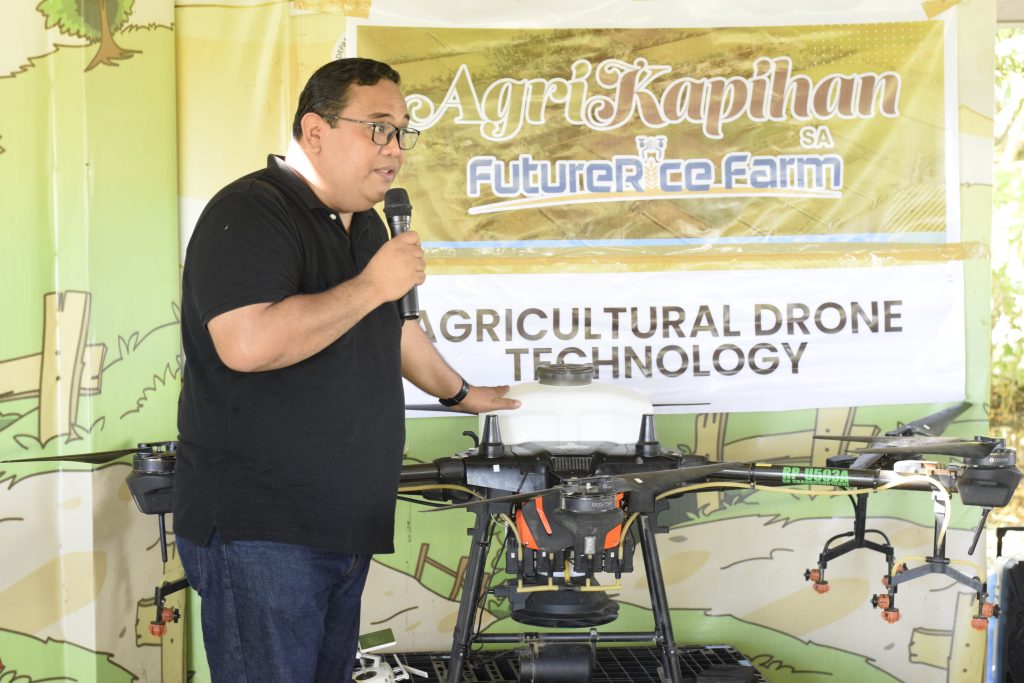
Remus Tancontian, operations manager of AgriDom, discussing the specifications and advantages of using agricultural drone in direct seeding.
Drone technology for direct seeding, is it possible? This is the main question that was answered by our drone researchers during the June 23 AgriKapihan at the FutureRice Farm, DA-PhilRice Central Experiment Station.
Seventy farmers, coop members, and agriculturists from LGU-Talavera and Science City of Muñoz, Central Luzon Hybrid and Inbred Rice Seeds Agriculture Cooperative (CLHIRSAC), Nagkakaisang Magsasaka Agricultural Primary Multi-Purpose Coop (NMAPMPC), and Bantug Primary Multi-Purpose Coop along with DA-PhilRice staff attended the event. It demonstrated the agricultural drone, an unmanned aerial vehicle (UAV) for direct seeding in rice.
Dr. Karen Eloisa T. Barroga, deputy executive director for development, encouraged farmers to be more objective and open-minded in adapting modern technologies as these are being developed to ease farming processes and reduce costs.
On the other hand, AgriDom Operations Manager Remus Tancontian discussed the features and advantages of using the agricultural drone – can finish crop establishment for 30 minutes per hectare; even and consistent in seed spreading; and can attain the 40kg recommended seeding rate.
Compared to manual broadcasting, which incurs a total cost of PhP5,460/ ha involving 3 bags of seeds (120kg) at PhP1,520 per bag, and labor cost of PhP900 for 3 laborers, drone seeding can lessen the cost by PhP3,090.
By utilizing drone seeding technology, total cost can be
reduced to PhP2,370/ha as the rent for a drone is only PhP850/ha.
Furthermore, DA-PhilRice ICT Specialist Nehemiah L. Caballong explained that during their 2022 Dry Season experiment, the drone seeded produced 6.85t/ha while manually-broadcasted yielded 6.38t/ha.
He added that the agricultural drone is also used in fertilizer application and chemical spraying.
“This technology has potential in helping farmers reduce the cost in production and labor like the combine harvester, and I hope that this technology can be available soon,” said Dr. Rudy S. Bernardo, farmer consultant from LGU-Talavera.




